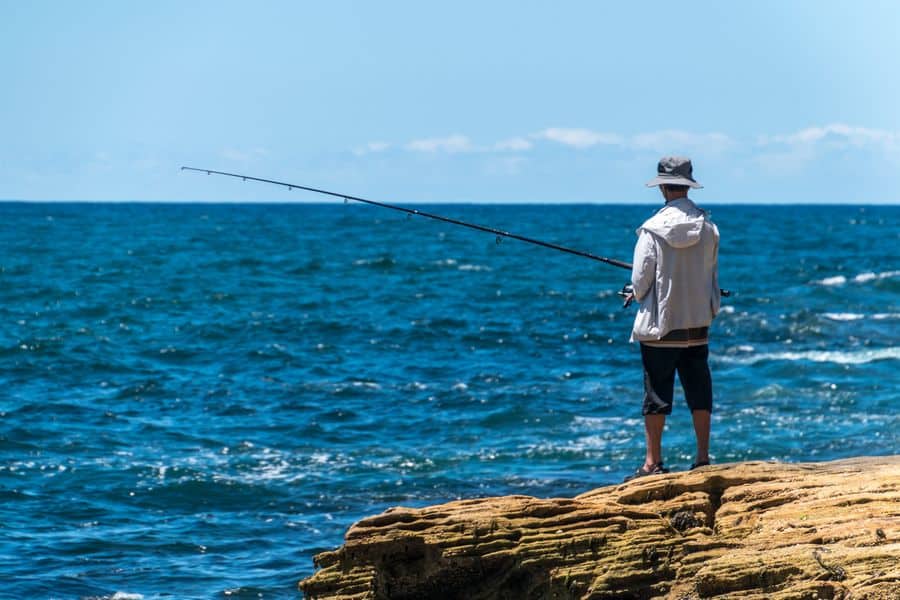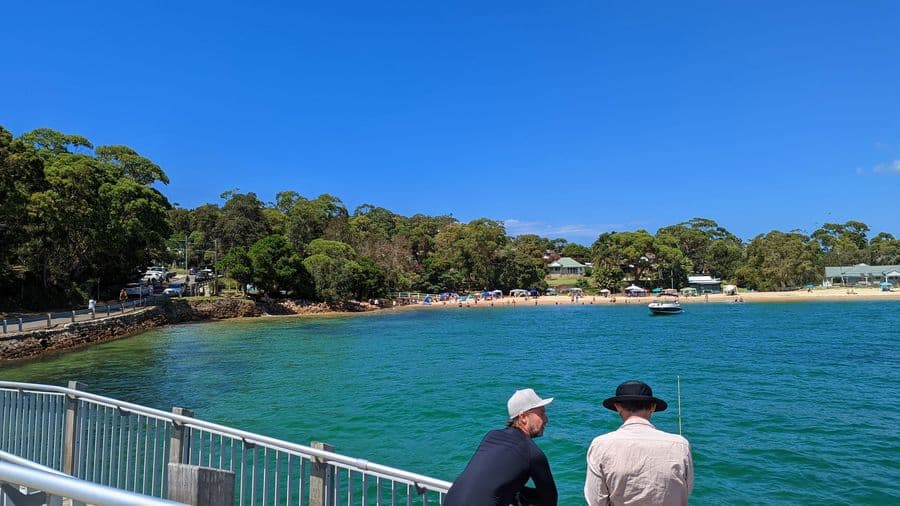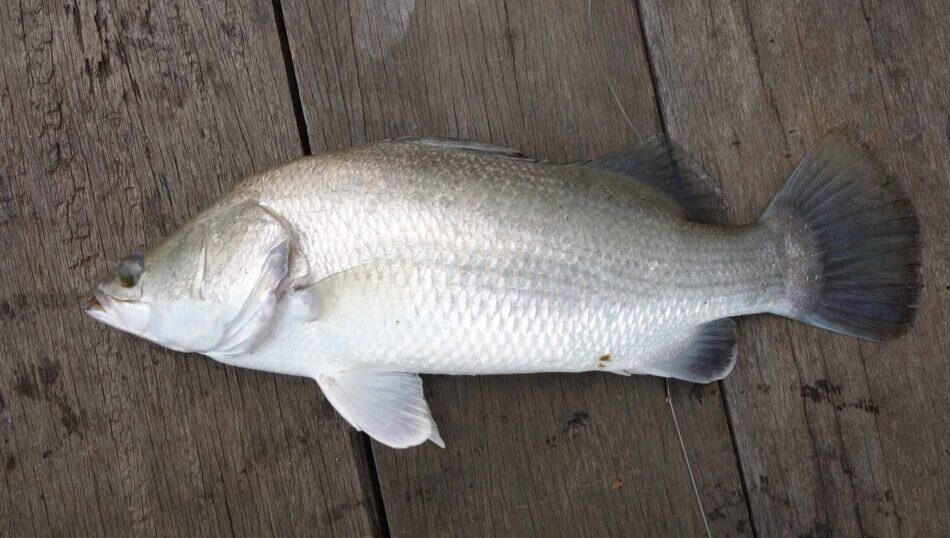Delicious, tasty, and thrilling to catch, barramundi are a popular target for many anglers in Australia. Their fight, when hooked, makes for an exciting battle, and the potential size of these fish means they are well worth the effort. But can you catch barramundi in New South Wales (NSW)?
You can catch barramundi in NSW along the east coast of Australia, from northern Queensland down to Victoria. Barramundi inhabits mangrove estuaries and river creeks and ventures into the open sea for spawning. They can be found in fresh and saltwater, making them a versatile target for anglers.
However, before wetting a line in NSW, it’s important to know the regulations surrounding barramundi fishing. In this article, we will cover everything you need to know about barramundi fishing in NSW, from fishing methods to bag and possession limits. Buckle up, and let’s dive right in!
Licensing For Barramundi Fishing In NSW
To prevent overfishing and protect this popular species, every angler wishing to fish for barramundi in NSW must have a current recreational fishing license. The Department of Primary Industries
To obtain a license, you must be 18 years or over (although a permit is not required if you are aged under 18 and are supervised by a licensed adult). You can apply for a recreational fishing license online
Alternatively, you can visit a fishing license agent or service centre to purchase a license in person. The cost of a license
- $7 for three days.
- $14 for one month.
- $35 for one year.
- $85 for three years.
You must always carry your license when fishing and produce it if a fisheries officer requests it. Lack of a permit, or failure to produce one when requested, can result in on-the-spot fines of up to $500.

Bag And Fishing Possession Limits
When fishing for barramundi in NSW, it’s essential to know the bag and possession limits
The bag limit is the maximum number of fish you can take home with you in a day, while the possession limit is the maximum number of fish you are allowed to have (including those in your freezer).
In NSW, the current bag and possession limits for barramundi are:
- Two fish per person (combined total for both fresh and saltwater).
- Four fish per boat (combined total for both fresh and saltwater).
These limits apply regardless of whether you are fishing from the shore or a boat. It is also important to note that these limits apply to the whole of NSW, including:
- Estuarine.
- Freshwater.
- Marine waters.
You risk license revocation and on-the-spot fines if you are found to have more fish than the limit allows.
Fishing Size Limits
In addition to bag and possession limits, there are also size limits for barramundi fishing in NSW. Size limits help to ensure that fish have a chance to spawn at least once before being caught and help to protect juvenile fish from being harvested.
The minimum legal size for barramundi in NSW is 35cm (13.77 in), meaning any fish you catch must be larger than this to be lawfully kept. All barramundi must be measured from the tip of the snout to the fork in the tail, with the fish lying flat on its side.
If you catch a barramundi smaller than the minimum legal size, you must return it to the water immediately. Possession of undersized fish can result in on-the-spot fines of up to $500, so it’s important to be careful when measuring your catch.
If you are unsure whether a fish is a legal size, it is best to err on the side of caution and return it to the water.

Barramundi Fishing Methods
There are several different methods anglers can use to catch barramundi, and the best approach will depend on the particular circumstances. You can fish from:
- The shore.
- A boat.
- A kayak or canoe.
Each method has its advantages and disadvantages, so it’s important to choose the right one for the situation.
Shore Fishing
Shore fishing is a good option if you don’t have access to a boat or if you want to save on the cost of hiring one. However, it’s limited in terms of the areas you can fish in, as you’re restricted to places with shoreline access.
When fishing from the shore, choosing the right spot is most important. Barramundi tends to congregate in areas with deep water and plenty of food, so look for spots where there are drop-offs or submerged structures. Places like river mouths, tide pools, and mangrove forests are good options.
You’ll need a rod and reel, line, bait, and some weight to keep your bait in the strike zone. The type of rod and reel you use will depend on the size of the fish you’re targeting and your personal preference. For barramundi, a medium to heavy action rod paired with a baitcasting or spinning reel is a good option.
Boat Fishing
Boat fishing is an excellent option when you want to move around and cover more ground. It also allows you to access areas that are inaccessible from the shore, such as deep water offshore or up rivers. However, it requires more equipment and experience than shore fishing, and it can be more expensive.
Choosing the right size boat is essential for barramundi fishing. A small boat like a kayak or canoe can be fine in some situations, but you’ll generally want something larger that can comfortably accommodate all your gear and handle rough conditions. A 4-6 meter (13-19 ft) boat is a good option for most anglers.
Regarding equipment, you’ll need all the same gear as you would for shore fishing, plus a few extras. A boat allows you to use more sophisticated fishing gear, such as downriggers and outriggers, which can help you target fish more effectively. You’ll also need a way to anchor your boat so you don’t drift away from your spot.
Kayak And Canoe Fishing
Kayak and canoe fishing are good alternatives to boat fishing if you don’t have access to a boat or if you want to save on the cost of renting one. They’re also a great option for anglers who want to get closer to the action, as they allow you to paddle right up to fish-holding structures.
However, kayak and canoe fishing do have some challenges. They can be difficult to maneuver in tight spaces and don’t offer the same level of stability as a boat. You’ll also need to be careful when choosing your gear, as some types of equipment can be difficult to use from a kayak or canoe.
Final Thoughts
Catching barramundi is legal in NSW, but there are rules and regulations to control its population. Before wetting a line, you will need a recreational fishing license that you must carry with you when fishing. There are also size and bag limits in place to prevent overfishing.
With a bit of planning and preparation, you can have a successful day fishing for barramundi in NSW. Choose the right spot, use the right gear, and follow the rules and regulations, and you’ll be sure to catch plenty of fish.
Resource Links To Products We Use And Recommend
More Pages On Fishing
The Underestimated Threat: Stonefish In Hervey Bay Ecosystems
Stonefish are known to inhabit various coastal regions around the world, and Hervey Bay in Australia has had a few encounters over the years with the dreaded stonefish. Hervey Bay offers a...
Loved for their delicious, oily flesh, Australian salmon are a prized catch for many anglers. And while they can be caught using various techniques, baits are often the most effective. But which...


